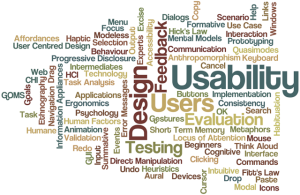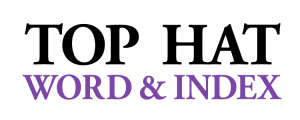Document Usability, Pt. 2: What exactly is “Usability?”
Usability is like oxygen. You don’t notice it until its missing. –Unknown
So….try to contain your excitement on this topic, if you can. 🙂
However, if you’re here reading, and a government official such as a planner or a business professional, it’s worth your time to review this before further examination of your in-house functions and needs with your documentation.
What exactly do we mean by “usability” in documentation? Perhaps you haven’t put much thought into it, but as a technical writer and usability specialist, that’s part of my job.
First, let’s take a step back by looking at the definition of usability. To understand its applicability in the world of documentation, we need some context to understand what the root of usability is about (oh yeah, its “aboutness” — sorry, a little indexer humor).
It probably comes off as a bit of a fluffy term, opposed to saying something like “user-friendly,” which I also toss around in these posts.
“user-friendly,” which I also toss around in these posts.
I suppose I should have a lab coat on or dress up like the Monopoly guy if I’m bringing usability into my vocabulary, while I’ll throw on my user-friendly overalls when I go down that rabbit hole. In any event, musings aside and through an initial look, the terms may seem to be nearly identical. It’s probably easy to gloss them over assuming they mean essentially the same thing….however a deeper look reveals that is really not the case.
Let’s break this down.
User-friendly, interestingly enough, suggests usability in something, through either prior experience or at least an assumption….in other words, user-friendly takes on an apparent and clear determination about something’s functionality prior to its use. Merriam-Webster.com defines user-friendly as follows:
us·er–friend·ly adjective \ˌyü-zər-ˈfren(d)-lē\
I’ll add my own two cents to this.
To me, user-friendly is a bit of a blanket one can toss at just about anything. “This” is user-friendly, “that” is not….oh, but THAT over there is. It’s a term that is applicable to everything from pliers to keyboards, from dancing shoes to sporks around the campfire to eat your franks & beans, or from Euros to dump truck steering wheels and the jake brakes next to them.
As one online commenter put it in response to the definition of user-friendly at the online version of Merriam-Webster.com, “The Universe is user-friendly.”
Sure. Par for the course, but I’m only guessing.
Unlike its aforementioned counterpart, by definition usability suggests applicability for something that may not appear — at least through first sight or an initial assessment — to be usable, or perhaps its full capabilities are simply unknown or untested.
us·able adjective \ˈyü-zə-bəl\
: capable of being used : in good enough condition to be used
So there you are. At least convenience is implied, and that’s, umm, convenient I suppose.
In the world of technical writing, usability presents an extremely wide canvass. For technical writers who are formally trained through college certification programs, usability is typically associated with classes and practices in usability testing, and usability testers are one of many career spokes in the tech writing world. It requires some theoretical knowledge, and focuses on users and how they interact with products or information, and the results from the testing are usually intended to help improve the product and/or user experience.
However, let’s squeeze that focus a bit further for usability as it pertains to documentation; and in our case government documentation. We’ll do that in Part III, where we identify some of the trappings government documentation has a tendency to land in — and then we’ll get into some remedies to address these matters and free the content for the masses!
In the meantime feel free to weigh in on the discussion….what is usability to you, and how can it be improved in some of the everyday functions of what you do?
Paul Sweum, the Principal, Town Planner & Technical Writer for Top Hat Word & Index, provides over two decades of professional technical communications and writing experience, of which his subject focus involves a career as an urban planning professional. He served mainly small communities and towns where he worked up from a planning intern to that of staff planner, then to a community development director in the states of Arizona and Washington. He spearheaded numerous projects including authoring and editing a wide variety of planning documents.
These technical communications were not only designed to reflect the vision of communities, but served as consensus-building tools to inform citizens, developers, public officials, decision-makers, and agencies at various levels of government. By coaching these various stakeholders, Paul helped to empower communities as they shaped the planning visions of their future.
Feel free to drop Paul an email at Paul@TopHatWordandIndex.com if you have anything on your mind you wish to discuss. Paul works as a usability specialist for town planning, government and business documentation, in addition to indexing for nonfiction books and technical documents. With his eclectic background and experience, he’s often called into planning departments to help in a variety of ways; whether it’s with in-house documentation, pinch-hitting to resolve a backlog of projects, file systems assistance, or other types of advisement.








Trackbacks
Comments are closed.